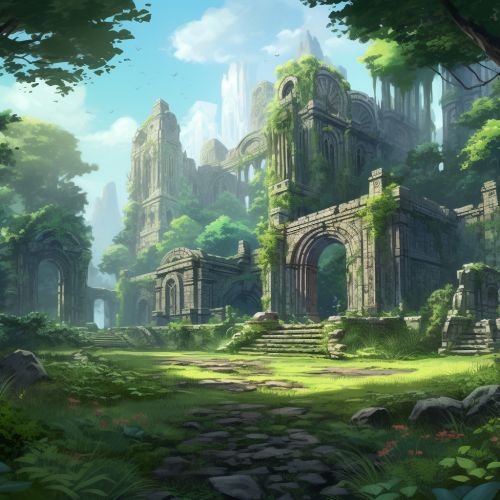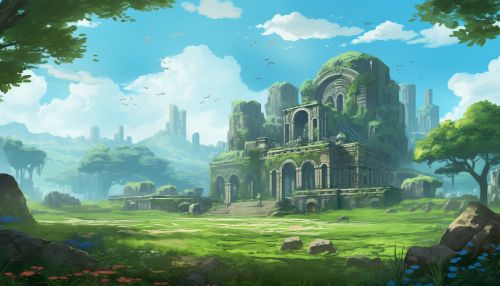Pre-Columbian civilizations
Origins and Development
The term Pre-Columbian refers to the various indigenous cultures that existed in the Americas before the arrival of Christopher Columbus in 1492. These civilizations spanned a vast geographical area, from the northern reaches of North America to the southern tip of South America. They included many diverse cultures, each with its own unique traditions, languages, and technologies.


The origins of these civilizations are a subject of ongoing debate among archaeologists and anthropologists. The most widely accepted theory is that the first humans arrived in the Americas from Asia via the Bering land bridge, a strip of land that once connected Siberia and Alaska. This migration is believed to have occurred around 13,000 BC, during the last Ice Age.
Over time, these early settlers spread throughout the Americas, forming distinct cultures and societies. Some of these societies developed into complex civilizations with advanced technologies and sophisticated social structures. These include the Maya, the Aztecs, and the Incas, among others.
Mesoamerican Civilizations
Mesoamerica, a region that extends from central Mexico to northern Costa Rica, was home to several pre-Columbian civilizations. The most notable of these are the Olmec, Maya, and Aztec civilizations.
Olmec Civilization
The Olmec are often considered the "mother culture" of Mesoamerica, as many elements of their culture, such as hieroglyphic writing and calendar systems, were later adopted by other civilizations. The Olmec civilization flourished from around 1400 BC to 400 BC, with its heartland in the tropical lowlands of south-central Mexico.
Maya Civilization
The Maya civilization, which spanned from 2000 BC to the 16th century AD, was one of the most advanced pre-Columbian civilizations. The Maya developed a complex writing system, advanced astronomical knowledge, sophisticated architecture, and a precise calendar system. They built magnificent cities, such as Tikal and Chichen Itza, which are renowned for their impressive temples and pyramids.
Aztec Civilization
The Aztec civilization emerged in the 13th century AD in the Valley of Mexico. The Aztecs are known for their military prowess, complex social structure, and impressive architectural achievements, including the capital city of Tenochtitlan, which was one of the largest cities in the world at the time of its peak.
Andean Civilizations
In the Andean region of South America, several pre-Columbian civilizations arose, including the Moche, Chavin, and Inca civilizations.
Moche Civilization
The Moche civilization, which existed from 100 AD to 800 AD in what is now northern Peru, is known for its intricate pottery, sophisticated irrigation systems, and monumental architecture, such as the Huaca del Sol and Huaca de la Luna.
Chavin Civilization
The Chavin civilization, which flourished from 900 BC to 200 BC in the northern Andean highlands of Peru, is recognized for its distinctive art style, advanced metallurgy, and complex religious practices.
Inca Empire
The Inca Empire, which existed from 1438 AD to 1533 AD, was the largest empire in pre-Columbian America. The Incas developed a vast road system, advanced agricultural techniques, and impressive architectural feats, such as the city of Machu Picchu.
North American Civilizations
In North America, pre-Columbian civilizations included the Mississippian culture, the Ancestral Puebloans, and the Mound Builders.
Mississippian Culture
The Mississippian culture, which existed from 800 AD to 1600 AD in what is now the southeastern United States, is known for its large earthen mounds, complex social hierarchy, and extensive trade networks.
Ancestral Puebloans
The Ancestral Puebloans, who lived in the Four Corners region of the United States from 100 AD to 1300 AD, are renowned for their cliff dwellings, kivas (ceremonial structures), and petroglyphs.
Mound Builders
The Mound Builders, a term used to describe several different cultures that built earthen mounds across North America, were active from 3000 BC to 1500 AD. These mounds, which were used for various purposes including burial, ceremonial, and residential, are a testament to the architectural skills of these ancient cultures.
Conclusion
Pre-Columbian civilizations were diverse and complex, with advanced technologies, sophisticated social structures, and rich cultural traditions. Their achievements in areas such as architecture, agriculture, writing, and astronomy continue to fascinate scholars and laypeople alike. The study of these civilizations provides valuable insights into the history of the Americas and the development of human societies.
